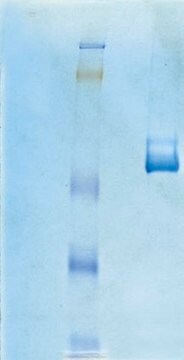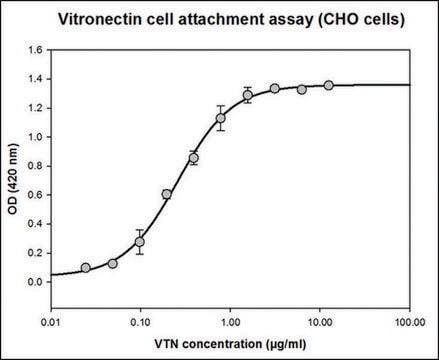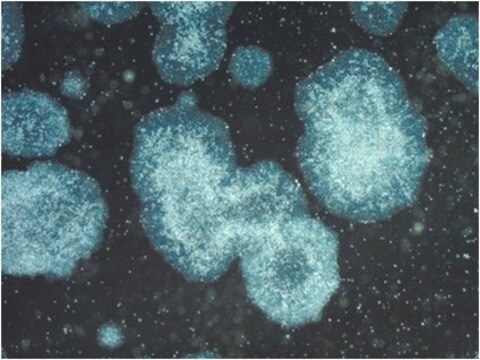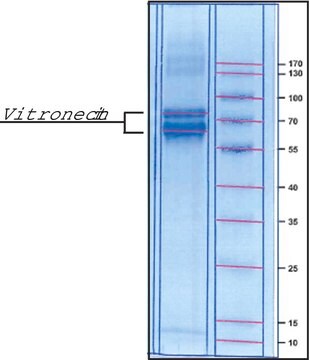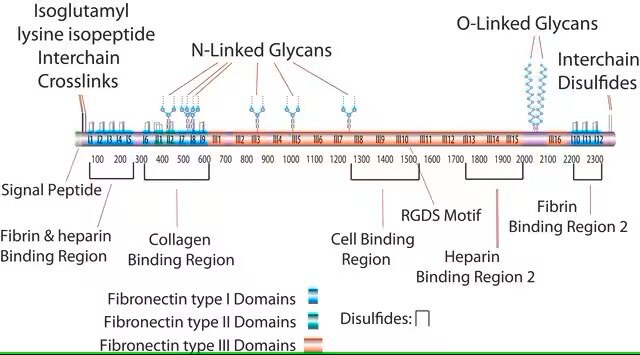5051
Human Vitronectin
from human plasma, liquid, 0.5 mg/mL, suitable for cell culture
Sinónimos:
Cell adhesion protein, ECM protein
About This Item
Productos recomendados
product name
Vitronectin, from human plasma, suitable for cell culture, solution
origen biológico
human plasma
Nivel de calidad
esterilidad
sterile-filtered
Análisis
>95%
formulario
solution
mol peso
75 kDa
envase
pkg of 0.1 mg
concentración
0.5 mg/mL
técnicas
cell culture | mammalian: suitable
solubilidad
water: miscible
Nº de acceso UniProt
Condiciones de envío
dry ice
temp. de almacenamiento
−20°C
Información sobre el gen
human ... VTN(7448)
Descripción general
Vitronectin′s primary use in cell culture is related to cell adhesion. It also binds to heparin and collagen.
Vitronectin is ideal for coating of surfaces. The optimal concentration for cell attachment and culture may differ for various cell types. Vitronectin has been used at a final coating concentration as low as 50 ng/cm2 on plasticware. It is provided in user-friendly packaging for use and storage. Vitronectin is sterile filtered and is supplied as a ready to use solution after thawing and concentration adjustment.
Acciones bioquímicas o fisiológicas
Nota de preparación
Cláusula de descargo de responsabilidad
Código de clase de almacenamiento
10 - Combustible liquids
Punto de inflamabilidad (°F)
Not applicable
Punto de inflamabilidad (°C)
Not applicable
Certificados de análisis (COA)
Busque Certificados de análisis (COA) introduciendo el número de lote del producto. Los números de lote se encuentran en la etiqueta del producto después de las palabras «Lot» o «Batch»
¿Ya tiene este producto?
Encuentre la documentación para los productos que ha comprado recientemente en la Biblioteca de documentos.
Los clientes también vieron
Artículos
Extracellular matrix proteins such as laminin, collagen, and fibronectin can be used as cell attachment substrates in cell culture.
Nuestro equipo de científicos tiene experiencia en todas las áreas de investigación: Ciencias de la vida, Ciencia de los materiales, Síntesis química, Cromatografía, Analítica y muchas otras.
Póngase en contacto con el Servicio técnico